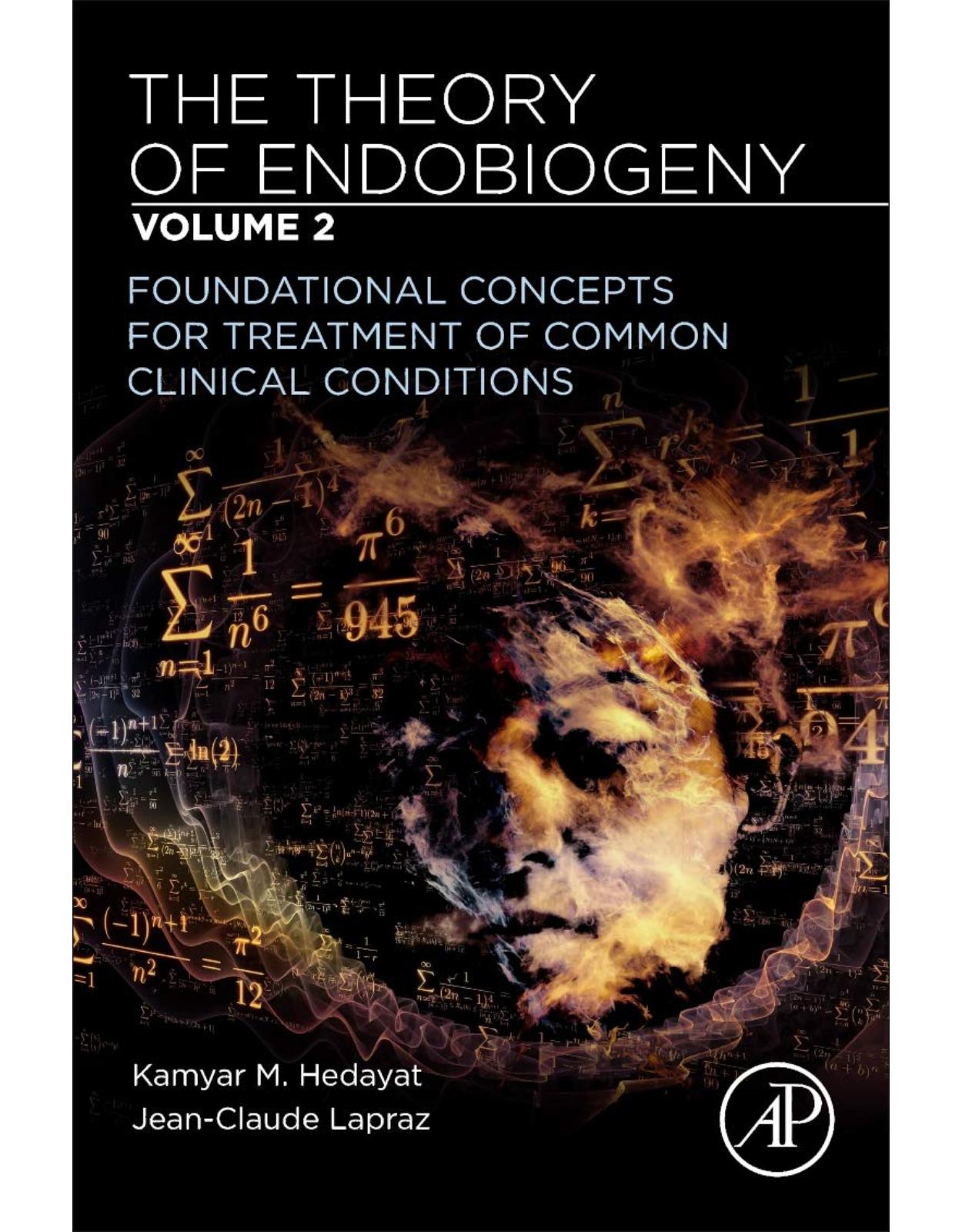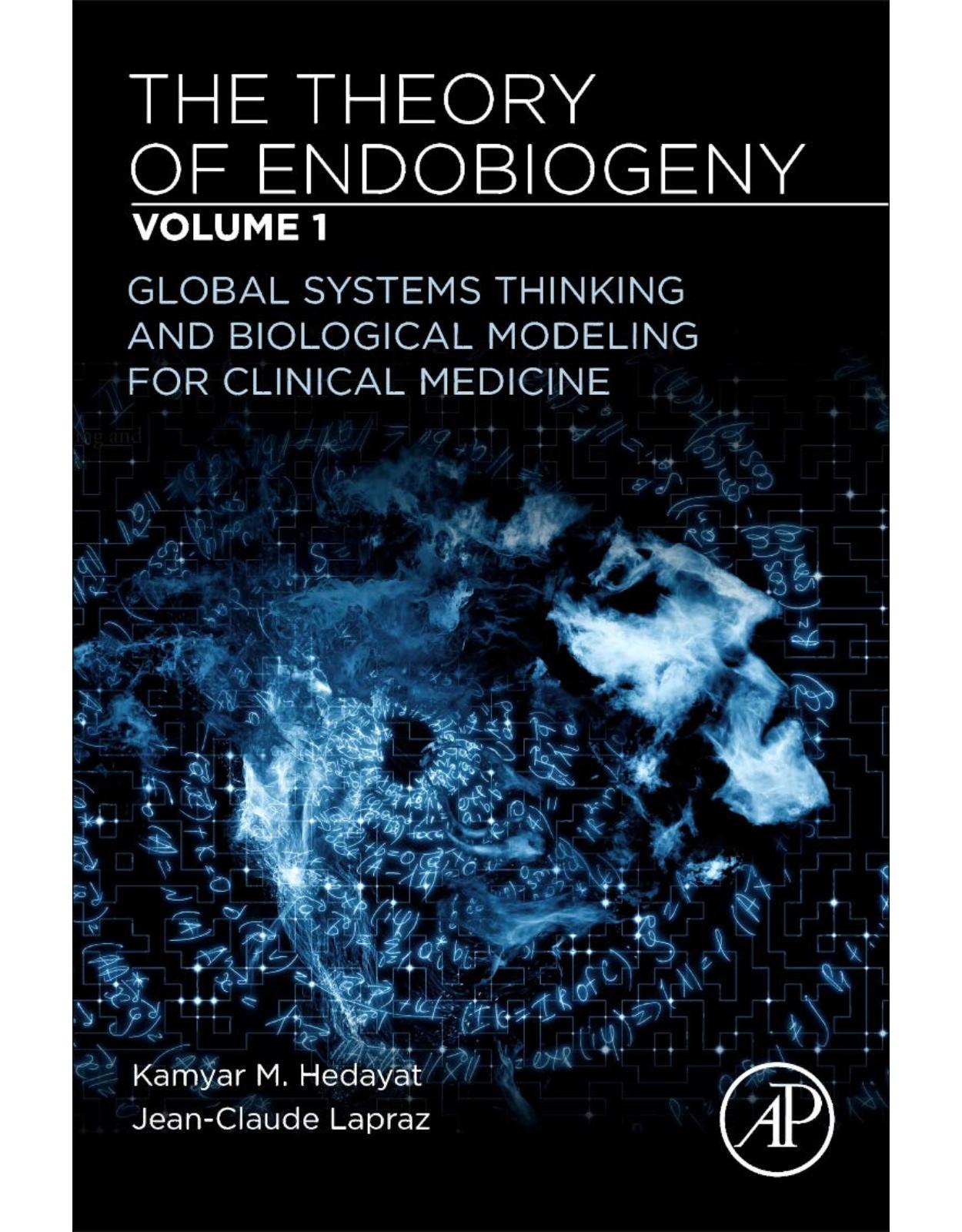
The Theory of Endobiogeny: Volume 2: Foundational Concepts for Treatment of Common Clinical Conditions
Livrare gratis la comenzi peste 500 RON. Pentru celelalte comenzi livrarea este 20 RON.
Disponibilitate: La comanda in aproximativ 4 saptamani
Editura: Academic Press
Limba: Engleza
Nr. pagini: 274
Coperta: Paperback
Dimensiuni: 15.2 x 22.9 cm
An aparitie: 1 Jun 2019
Description:
The Theory of Endobiogeny Volume 2: Foundational Concepts for Treatments of Common Clinical Conditions addresses the core elements of the adaptation response to stressors: autonomic nervous system (ANS), corticotropic axis, immunity and digestive tract function. The volume is oriented for clinical practice, offering clear discussions on treating the root cause of numerous common disorders, and symptomatically addressing the destabilizing factor in a vast number of disorders ranging from depression to irritable bowel, and from migraines to insomnia called spasmophilia.
- Extends the concepts of global systems integrative physiology to practical applications in the clinic
- Detailed explanations of historical, exam and biological modeling indexes related to the ANS, corticotropic axis, hepatobiliary and exocrine pancreatic function
- Root cause, mechanisms, symptoms and treatments for disorders of immunity, dysbiosis, infectious diseases and spasmophilia, as well as hepatobiliary and pancreatic insufficiency and congestion
- Materia medica of 22 key medicinal plants with summary of action and indication of usage according to the theory of Endobigoeny
- Special monodiets and dietary suggestions for disorder discussed
· · Chapter 1: A clinical approach to autonomic nervous system
· · Abstract
· · Introduction
· · Historical findings relating to the ANS by system
· · Historical findings relating to the ANS by branch of the ANS
· · Physical examination findings relating to the ANS by system
· · Biology of functions indices related to the ANS
· · A discussion regarding key indices
· · Conclusion
· · Chapter 2: A clinical approach to the corticotropic axis
· · Abstract
· · Introduction
· · Historical findings by system
· · Historical findings by hormone
· · Evaluation of the corticotropic axis
· · Biology of functions indices related to the corticotropic axis
· · Conclusions
· · Chapter 3: Immunity
· · Abstract
· · Introduction
· · That which brings about the need for immunity
· · Immune system: Definition and general function
· · Relationship of the immune system to the global system
· · Structure: Overview of the elements of the immune system
· · Tissues and organs of the immune system and their location
· · Synthesis of elements of immunity
· · Functioning of the immune system: Neuroendocrine regulation
· · Bone marrow, endocrine management, and the biology of functions
· · Implications of immune imbalance
· · Conclusions
· · Chapter 4: A general Endobiogenic approach to regulation of the immune system
· · Abstract
· · Introduction
· · Adaptogens
· · Innate immunity tissue: Mononuclear phagocytosis system
· · Adaptive immunity therapeutics
· · Emunctories
· · Biology of functions indices related to immune function
· · Hypoimmunity therapeutics
· · Hyperimmunity therapeutics
· · Recipes for hyperimmune states: Eczema, allergies
· · Recipes for autoimmune states
· · Alimentation and immune modulation
· · Conclusions
· · Chapter 5: Symbiosis
· · Abstract
· · Introduction
· · Evolutionary imperatives of development and adaptation
· · Ontology of commensal flora
· · Teleology of commensal flora
· · Endobiogenic cartography of enteric flora
· · Conclusions
· · Chapter 6: Disorders of dysbiosis
· · Abstract
· · Introduction
· · General considerations
· · Endogenous: Equilibrium of endobiogenic terrain
· · Enteric flora
· · Exogenous factors
· · Nature of dysbiosis
· · Implications of dysbiosis in local, regional, and systemic disorders
· · Historical findings associated with dysbiosis
· · Physical Examination related to dysbiosis
· · Diagnostics
· · Biology of Functions indexes
· · Treatment of dysbiosis
· · Alimentation
· · Equilibration of flora
· · The special role of medicinal clay
· · Restoration of flora
· · Treatment of dysbiosis: Terrain
· · Immune support with digestive tropism
· · Conclusions
· · Chapter 7: Hepatobiliary insufficiency
· · Abstract
· · Introduction
· · Embryology
· · Structural anatomy
· · Functional anatomy: The hepatic lobule
· · Hepatic circulation
· · General overview of function
· · Functional relationship of the liver to other emunctories
· · Splanchnic congestion in metabolism
· · Metabolism and adaptation
· · Hepato-ANS
· · Immunity
· · Historical findings related to functional exocrine hepatic insufficiency
· · Physical exam findings related to functional exocrine hepatic insufficiency
· · Signs of dysfunction of other organs and aspects of the gastrointestinal tract
· · Biology of functions
· · Therapeutic approach to hepatic insufficiency
· · Conclusions
· · Chapter 8: Exocrine pancreas
· · Abstract
· · Introduction
· · Embryology
· · Structural anatomy
· · Functional anatomy
· · Historical findings
· · Physical examination
· · Submaxillary glands hypertrophy
· · Tonsil hypertrophy
· · Upstream intestinal signs: Tongue
· · Cutaneous signs
· · Downstream intestinal signs
· · Biology of Functions: Somatostatin index
· · Therapeutics: General considerations
· · Medicinal plants with exocrine pancreatic stimulation
· · Medicinal plants with general substitutive enzymatic effects
· · Eupeptic plants with specific enzymatic substitutive support
· · Pancreatic drainage with direct exocrine and/or endocrine support
· · Intestinal-pancreatic plants with ANS support
· · Hepatobiliary-pancreatic
· · Pancreas-lungs
· · Pancreas-skin, pancreas-joints
· · Drainage: Pancreas-tonsils
· · Drainage: Pancreas-tonsils-thyroid
· · Pancreas-brain
· · Alimentation
· · Case study
· · Conclusions
· · Chapter 9: Infectious diseases of the ear, nose, throat, and bronchus
· · Abstract
· · Introduction
· · Ear, nose, and sinus disorders
· · Treatment guidelines
· · Sinusitis
· · General treatment guidelines
· · Tonsillitis
· · Agents of aggression
· · Response: Critical terrain
· · Treatment guidelines: General
· · General approach to treatment
· · Specific treatment guidelines: Exudative pharyngitis (white)
· · Specific treatment guidelines: Nonpurulent pharyngitis (red)
· · Otitis media
· · Sample treatment
· · Acute bronchitis
· · Agent: Induction of bronchitis
· · Symptomatic treatment of acute bronchitis
· · Chapter 10: A clinical approach to the thyrotropic axis
· · Abstract
· · Introduction
· · Anatomy, pathophysiology
· · Clinical significance of the thyrotropic axis
· · Symptoms related to the thyrotropic axis
· · Signs related to the thyrotropic axis
· · A discussion of key thyrotropic indexes of the biology of functions
· · Chapter 11: Spasmophilia
· · Abstract
· · Introduction
· · Role of calcium in the organism
· · Five stages in the sequence of events
· · Roles of calcium
· · Relationship of calcium to elements of the terrain
· · Latent spasmophilia
· · ANS: Role in spasmophilia
· · Functional spasmophilia
· · Structuro-functional spasmophilia
· · Iatrogenic causes of fragilization of terrain
· · Review of systems
· · Symptoms of Spasmophilia
· · Comportment
· · Observation
· · Signs diagnostic of spasmophilia
· · Signs supportive of a dysendocrinism
· · Diagnostic studies: Serum biomarkers
· · Diagnostic studies: Urine
· · Differential diagnosis
· · Evolution of untreated Spasmophilia
· · Principles of treatment
· · Acute treatment of spasmophilia
· · Restoration of buffering capacity
· · Nutrition
· · Therapy for the terrain: Functional spasmophilia
· · Therapy for the terrain: Structuro-functional spasmophilia
· · Conclusions
· · Chapter 12: Endobiogeny in clinical practice: A case study of recurrent streptococcal infection
· · Abstract
· · Chief complaint
· · History of present illness
· · Review of systems
· · Past medical history
· · Family history
· · Social
· · Temperament and personality
· · Physical examination
· · Treatment
· · Conclusions
· · Appendix A: Materia medica
· · Introduction
· · Achillea millefolium (yarrow)
· · Agrimonia eupatoria (agrimony)
· · Angelica archangelica (angelica)
· · Anthemis nobilis (Roman chamomile)
· · Artemisia dracunculus (tarragon)
· · Carduus marianus (milk thistle)
· · Cichorium intybus (chicory)
· · Crataegus oxyacantha (hawthorn)
· · Cynara scolymus (artichoke)
· · Juglans regia (Persian walnut)
· · Lavandula angustifolia (lavender)
· · Leonurus cardiaca (motherwort)
· · Matricaria recutita (German chamomile)
· · Melissa officinalis (Melissa, lemon balm)
· · Mentha piperita (peppermint)
· · Passiflora incarnata (passionflower)
· · Plantago major (plantain)
· · Raphanus niger (black radish)
· · Rosmarinus officinalis (rosemary)
· · Thymus vulgaris (thyme)
· · Valeriana officinalis (valerian)
· · Vitex agnus-castus (chaste tree)
· · Index
| An aparitie | 1 Jun 2019 |
| Autor | Kamyar M. Hedayat MD , Jean-Claude Lapraz MD |
| Dimensiuni | 15.2 x 22.9 cm |
| Editura | Academic Press |
| Format | Paperback |
| ISBN | 9780128169087 |
| Limba | Engleza |
| Nr pag | 274 |








